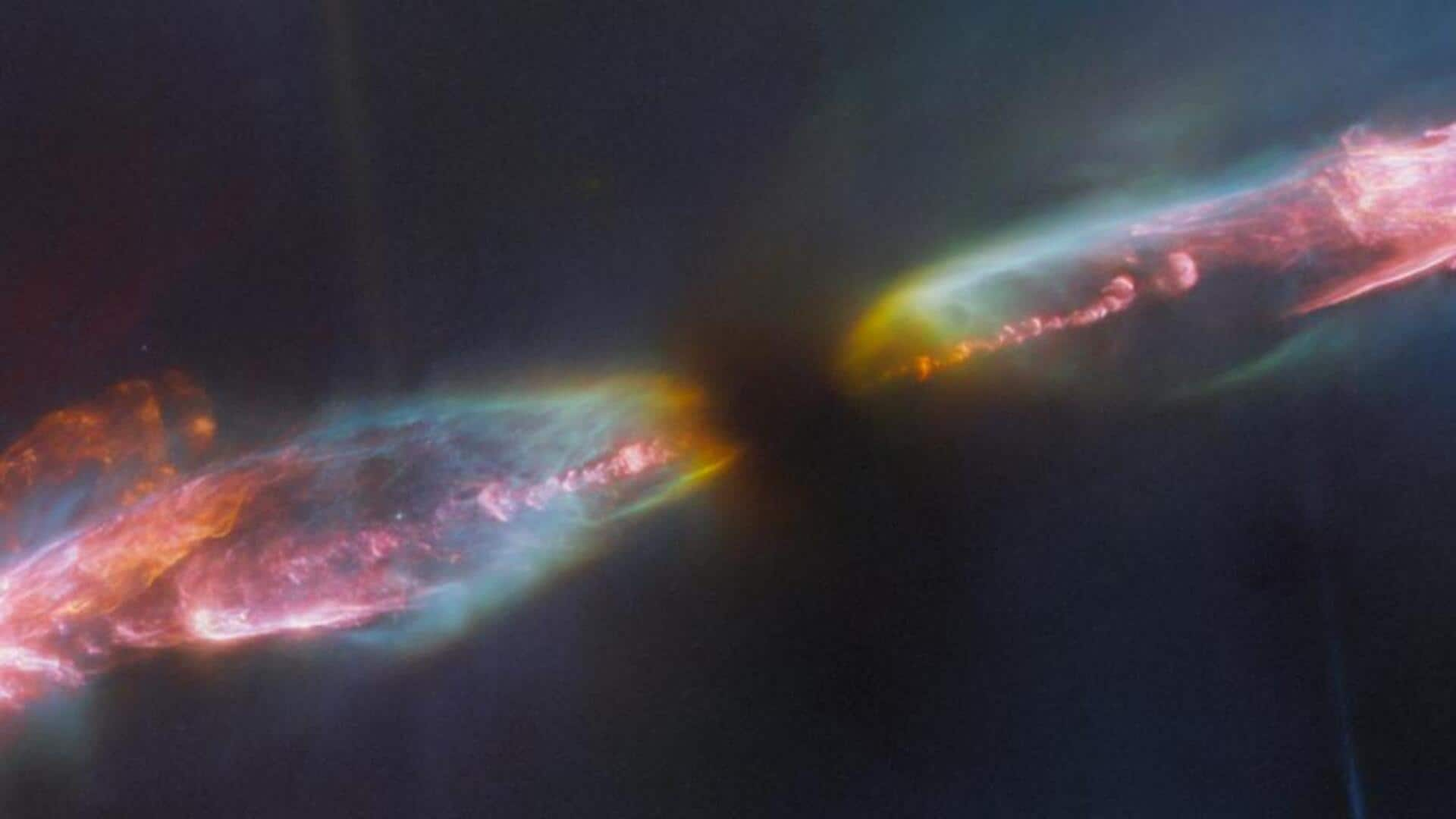
NASA's JWST captures stunning biopolar jets emanating from young star
What's the story
The James Webb Space Telescope (JWST) has captured a mesmerizing image of bipolar jets, called Herbig-Haro 211, emanating from a young star in constellation Perseus. Located about 1,000 light-years from Earth, the protostar is actively growing by drawing in surrounding gas and dust. Simultaneously, the star is expelling material into space in opposite directions, or the bipolar jets, at "supersonic speeds." Herbig-Haro 211 is among the "youngest and nearest protostellar outflows," making it an ideal target for Webb, notes NASA.
Details
What are Herbig-Haro objects?
Herbig-Haro objects are energetic regions in space where fast-moving material interacts with its surroundings, creating bright areas of ionized gas. In the case of Herbig-Haro 211, the emissions of molecules like carbon monoxide, silicon monoxide, and molecular hydrogen create a stunning visual display. The James Webb Space Telescope's infrared capabilities allow scientists to observe these interactions with interstellar matter, providing valuable information about the chemical makeup and behavior of young stars.
What Next?
The jets from the young stars are slower
The Near Infrared Spectrograph (NIRSpec) onboard JWST has revealed that jets from young stars are slower and richer in molecules like carbon monoxide, silicon monoxide, and molecular hydrogen compared to faster jets from older stars. Researchers found "almost no trace of atomic or ionized emission," suggesting "its spine is almost purely molecular." This is primarily because the shock waves surrounding the young star are not yet strong enough to break down the jets' molecules into individual atoms.
Insights
Webb's infrared capability unveils hidden stellar wonders
Webb's high resolution at infrared and near-infrared wavelengths allows scientists to observe Herbig-Haro 211 through the gas and dust that typically obscures it from other telescopes. This remarkable infrared capability of the space telescope makes it highly valuable for stellar astronomers, enabling them to study very young stars shrouded behind thick blankets of gas and dust in space.
Protostar
The star in Herbig-Haro 211 is 8% the Sun's mass
The protostar that's giving rise to these Herbig-Haro 211 bipolar jets is believed to be a binary star. It is estimated to be only about 8% the mass of the Sun and interestingly, it could represent what the Sun was like when it was just a few tens of thousands of years old. "It [the protostar] will eventually grow into a star like the Sun," said NASA.